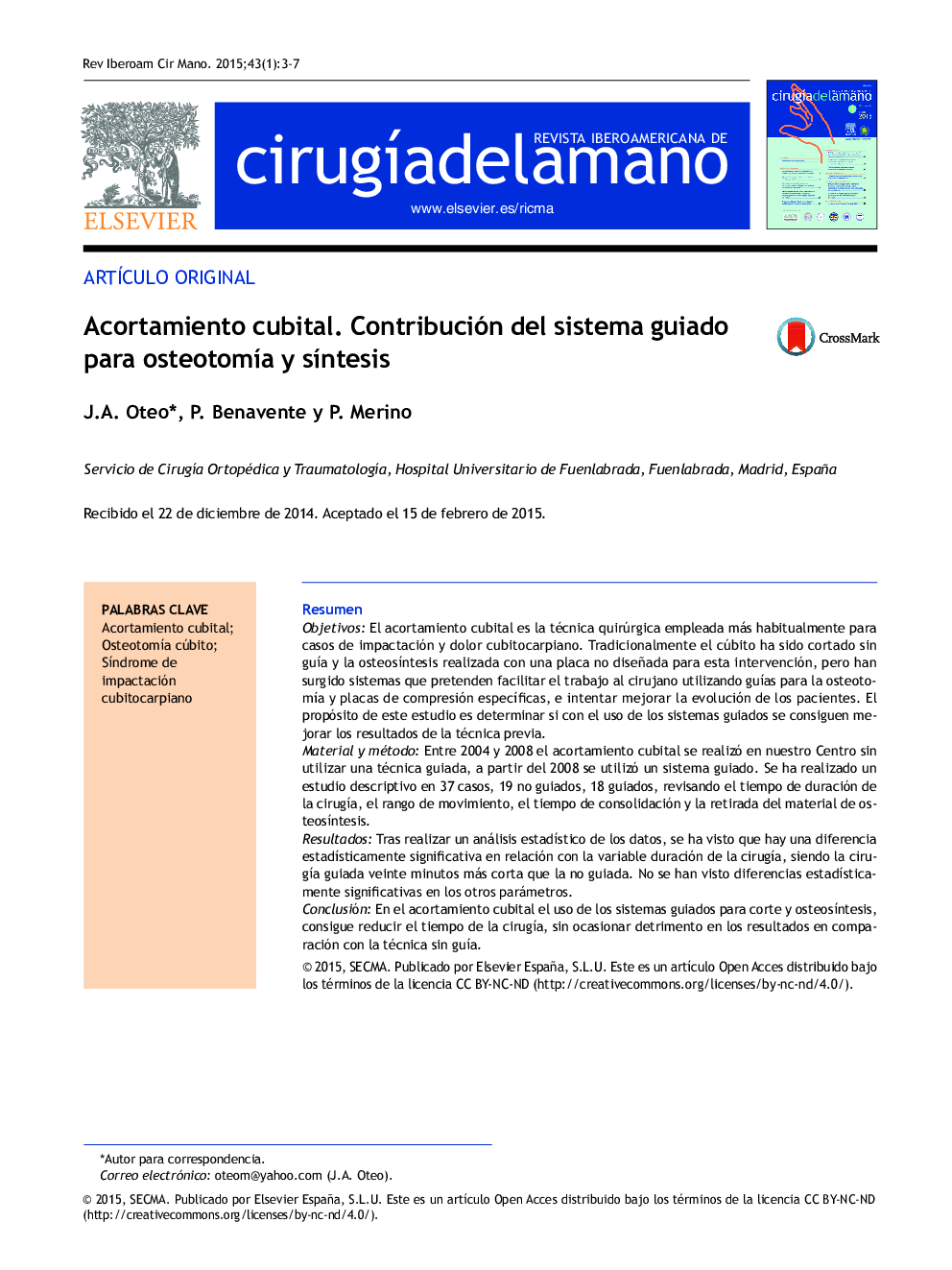| کد مقاله | کد نشریه | سال انتشار | مقاله انگلیسی | نسخه تمام متن |
|---|---|---|---|---|
| 4087914 | 1268070 | 2015 | 5 صفحه PDF | دانلود رایگان |

ResumenObjetivosEl acortamiento cubital es la técnica quirúrgica empleada más habitualmente para casos de impactación y dolor cubitocarpiano. Tradicionalmente el cúbito ha sido cortado sin guía y la osteosíntesis realizada con una placa no diseñada para esta intervención, pero han surgido sistemas que pretenden facilitar el trabajo al cirujano utilizando guías para la osteotomía y placas de compresión específicas, e intentar mejorar la evolución de los pacientes. El propósito de este estudio es determinar si con el uso de los sistemas guiados se consiguen mejorar los resultados de la técnica previa.Material y métodoEntre 2004 y 2008 el acortamiento cubital se realizó en nuestro Centro sin utilizar una técnica guiada, a partir del 2008 se utilizó un sistema guiado. Se ha realizado un estudio descriptivo en 37 casos, 19 no guiados, 18 guiados, revisando el tiempo de duración de la cirugía, el rango de movimiento, el tiempo de consolidación y la retirada del material de osteosíntesis.ResultadosTras realizar un análisis estadístico de los datos, se ha visto que hay una diferencia estadísticamente significativa en relación con la variable duración de la cirugía, siendo la cirugía guiada veinte minutos más corta que la no guiada. No se han visto diferencias estadísticamente significativas en los otros parámetros.ConclusiónEn el acortamiento cubital el uso de los sistemas guiados para corte y osteosíntesis, consigue reducir el tiempo de la cirugía, sin ocasionar detrimento en los resultados en comparación con la técnica sin guía.
ObjectivesUlnar shortening is a surgical technique used for impaction and ulno-carpal pain conditions. Traditionally, the ulna is osteotomized freehand and osteosynthesis is completed using compression plates that are not specifically designed for this intervention. There are now systems available intended to make the work of the surgeon easier by using osteotomy guides and compression plates. These are created for performing an accurate cut and achieving a suitable reduction and stability in the cut. The main aim of this article is to determine whether the use of a guided system can achieve better results compared with the previous technique.Material and methodsBetween 2004 and 2008, ulnar shortening was performed at our Hospital without the use of a guided system, whereas, from 2008 onwards, use of the guided technique was implemented. A descriptive study was conducted on 37 surgeries, 19 unguided, 18 guided, focused on operation time, range of movement, and removal of osteosynthesis material.ResultsFollowing a statistical analysis of the data, it was observed that there was only a statistically significant difference between both groups for the variable operation time. Therefore surgery without the specific cutting and osteosynthesis system took twenty-one minutes longer on average than surgery using the specific system. No statistical difference was seen in the other variables.ConclusionIn ulnar shortening, specific systems for osteotomy and synthesis do not prevent the complications typically linked to this surgical technique. Even so, they do reduce operation time without affecting the outcomes in comparison with traditional methods.
Journal: Revista Iberoamericana de Cirugía de la Mano - Volume 43, Issue 1, May 2015, Pages 3–7